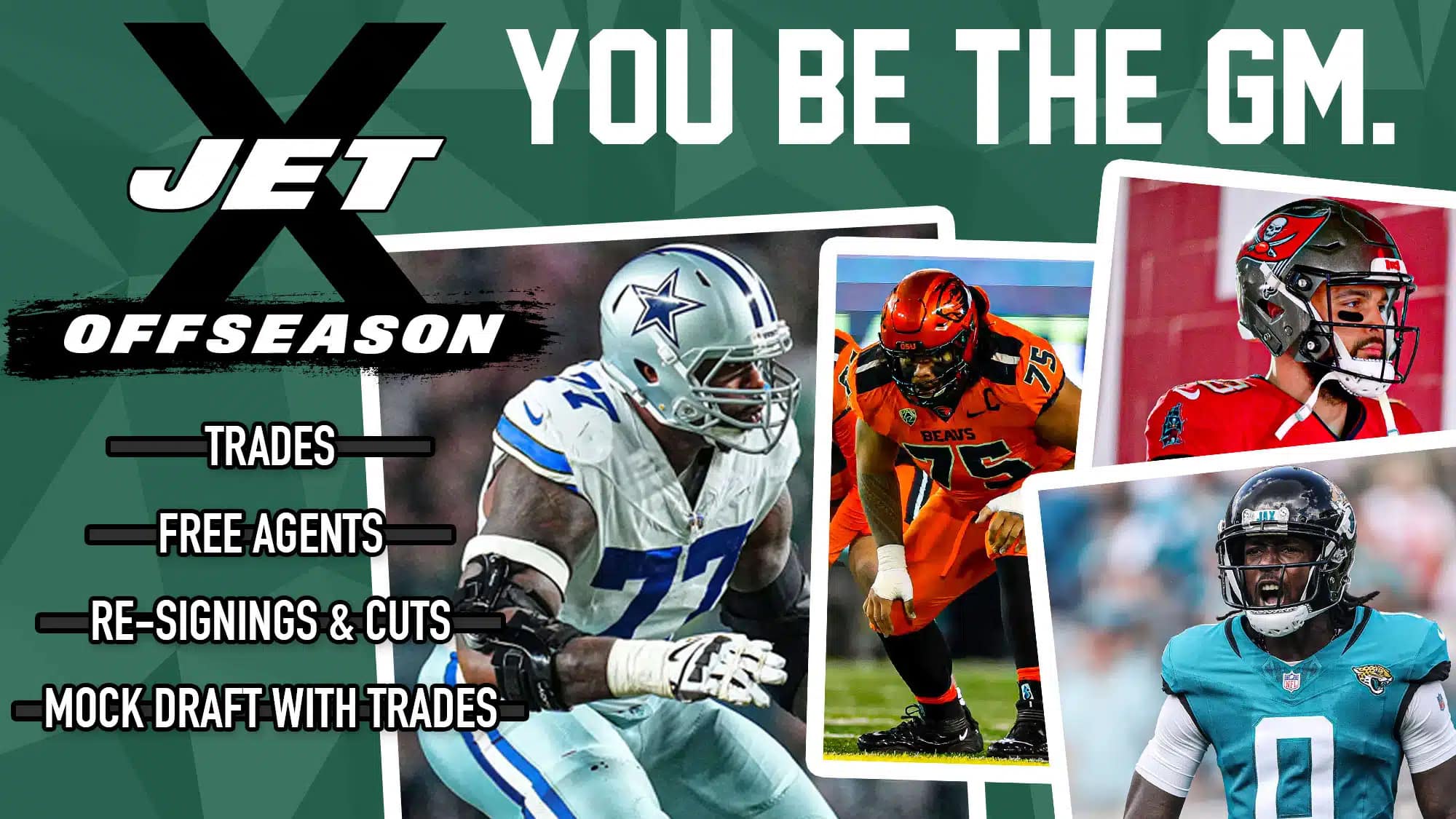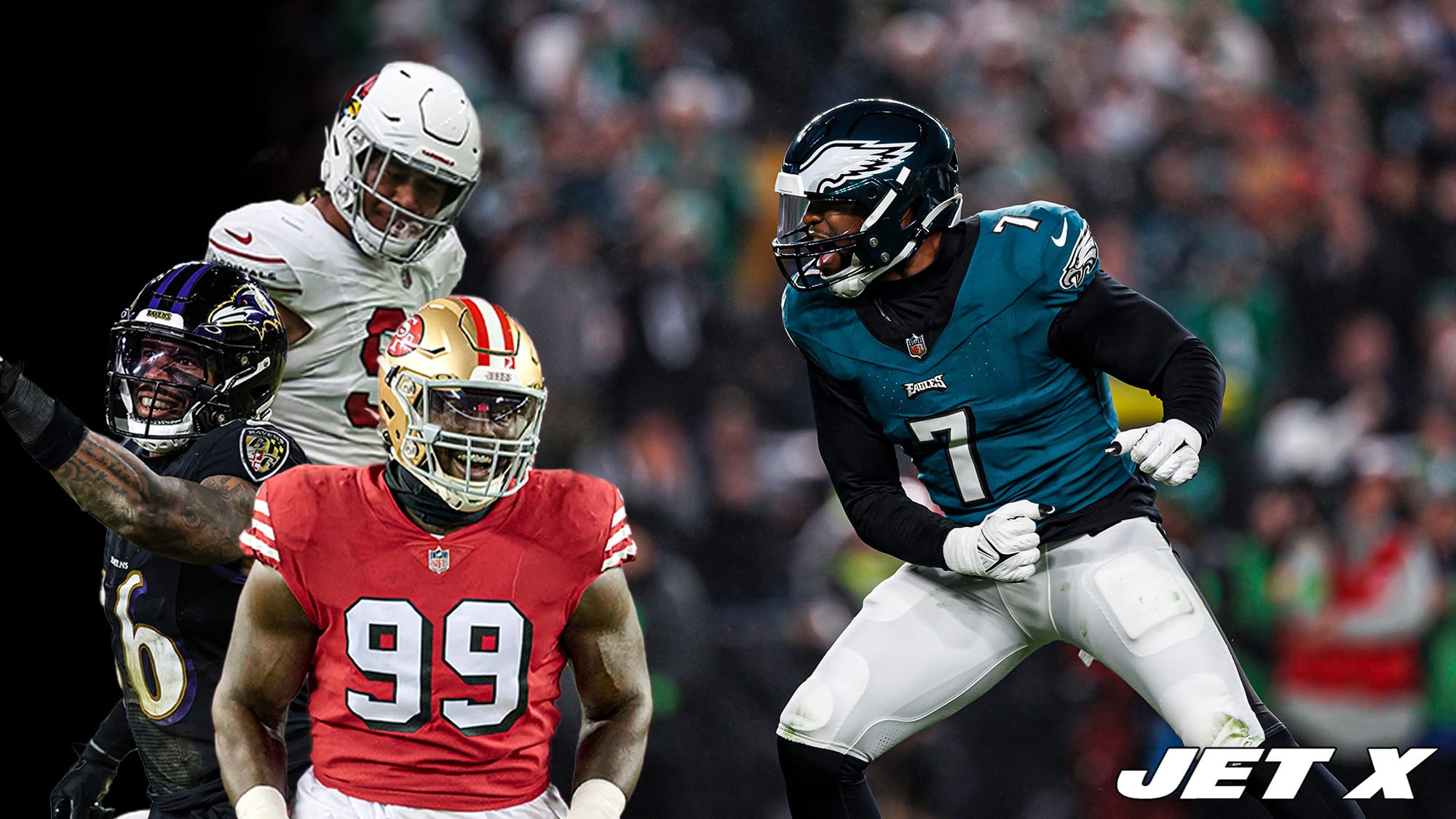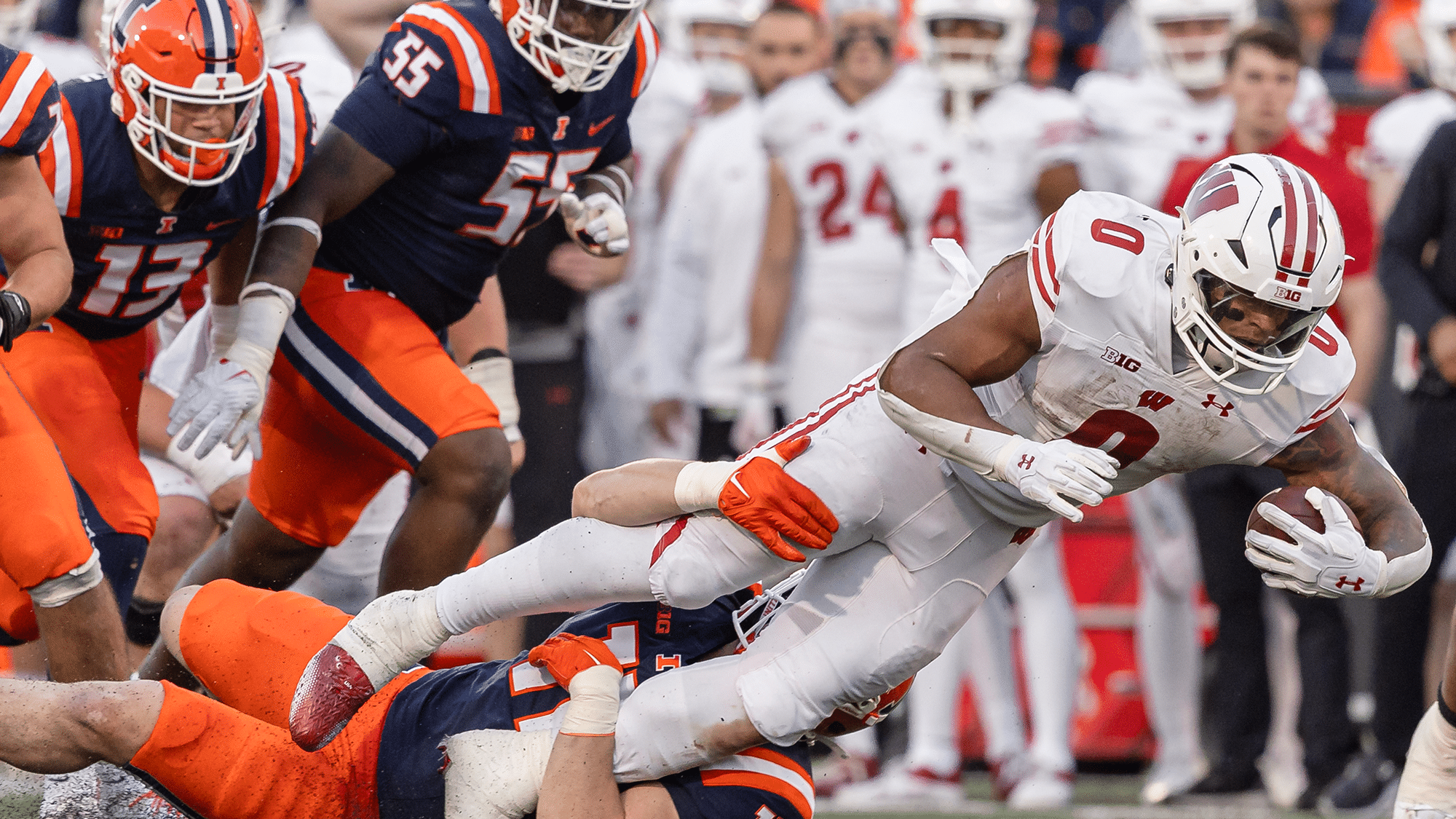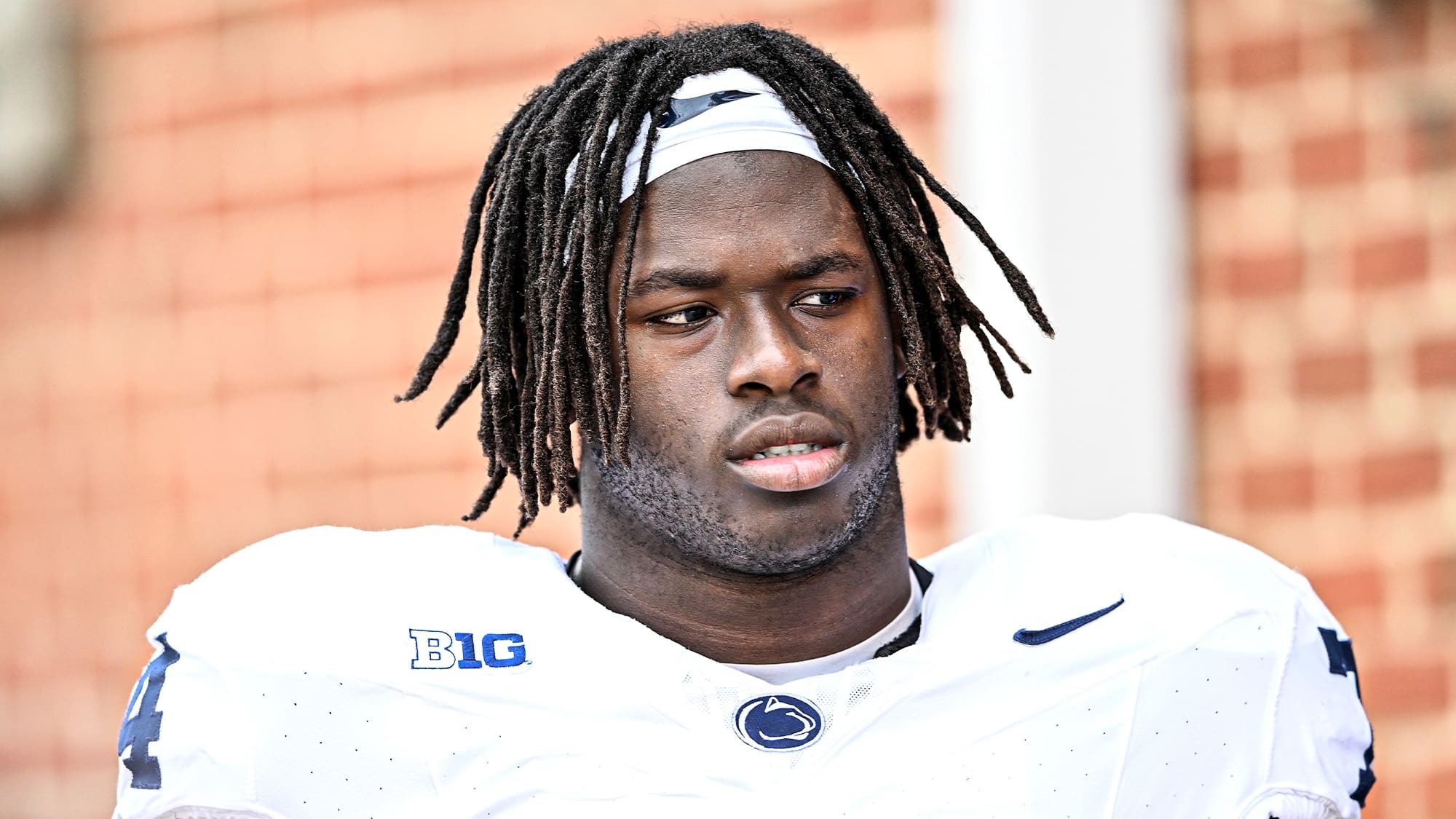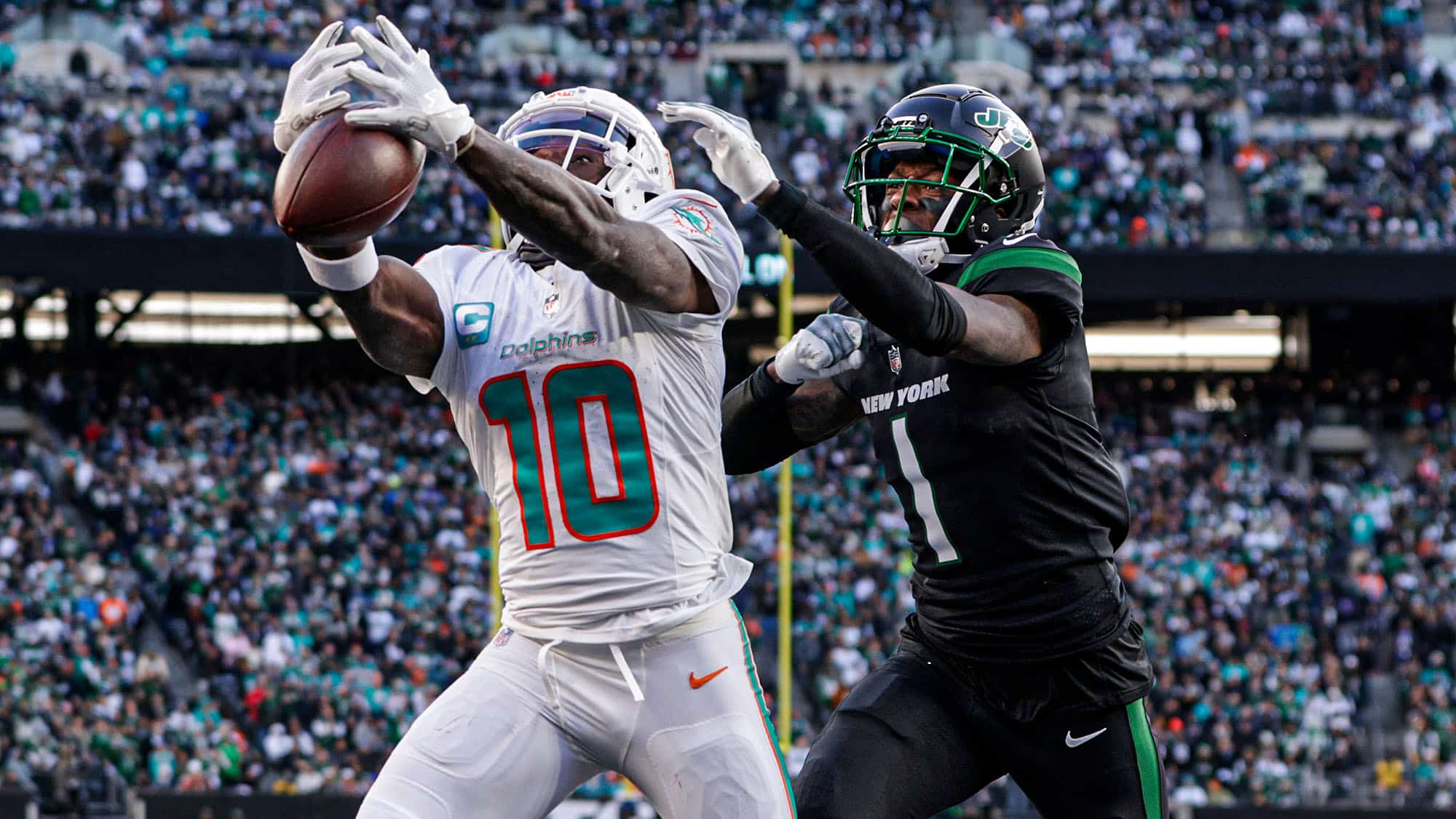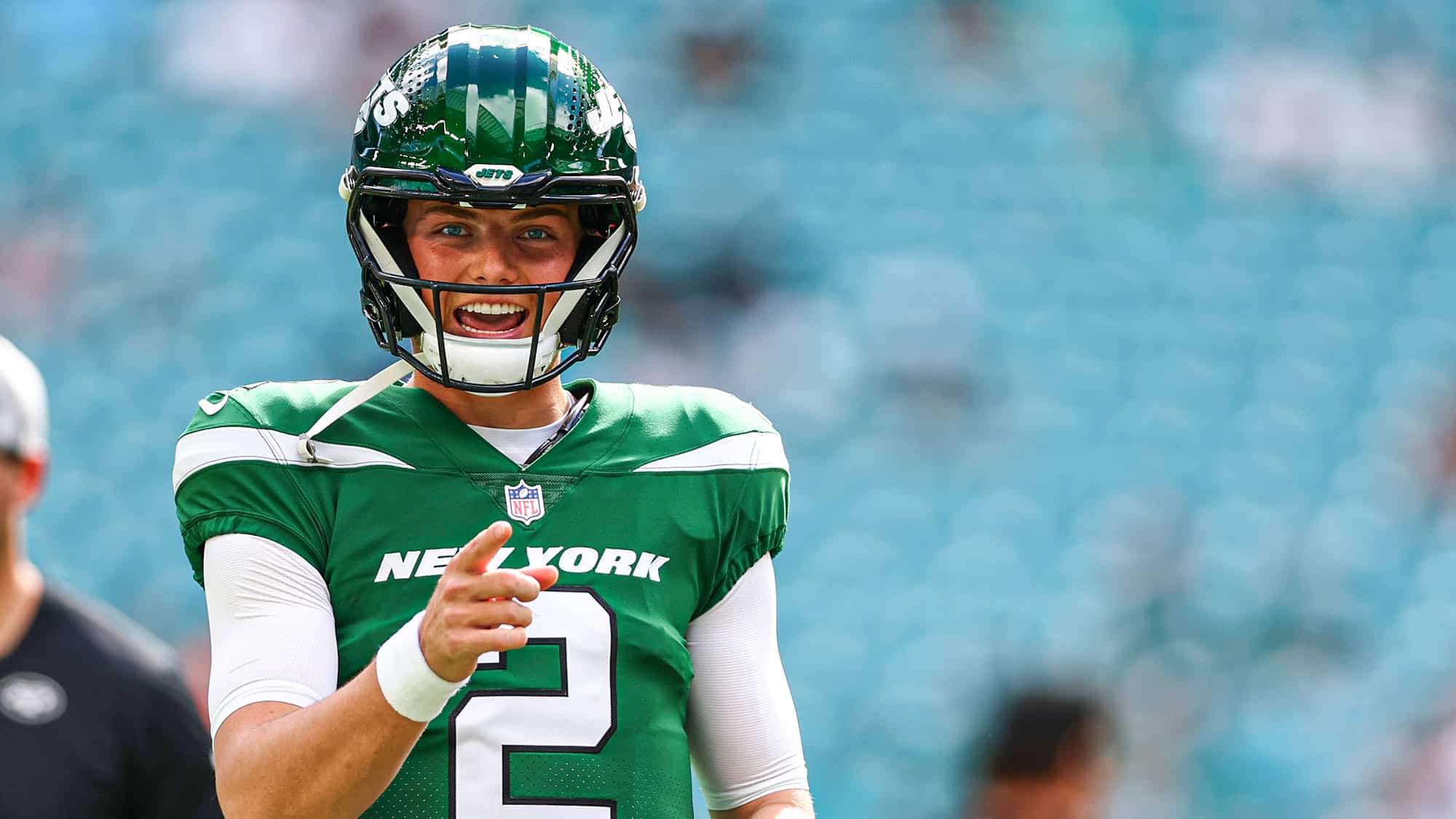The New York Jets need a new strong safety for 2024
If there was one major weakness in the New York Jets’ 2023 defense, it was strong safety Jordan Whitehead. Whitehead allowed more touchdowns (7) than any other safety in the NFL while also ranking in the bottom 10 in yards per target (10.9) and missed tackle rate (18%). Despite those numbers, the Jets’ coverage still ranked in the top five in most statistical categories.
In 2023, Whitehead played 47.1% of his snaps at deep safety, 30.2% in the box, and 20.4% in the slot. That was a shift from 2022 when he was at 54.6% deep, 32.0% box, and 10.8% slot.
Whitehead’s biggest struggles in coverage came when he was playing in the box. When lined up at a linebacker spot, he allowed 7 receptions on 8 targets for 144 yards, 4 touchdowns, a perfect 158.3 passer rating, and 1.01 EPA per target.
Whitehead’s other major area of struggle came when covering tight ends. He allowed 11 catches on 16 targets for 195 yards and 5 touchdowns against the position. Among 72 safeties with at least 50 coverage snaps against tight ends, Whitehead’s 0.76 EPA per target allowed ranked sixth-worst.
The Jets have an opportunity to elevate their defense to the next level. If Whitehead is their Achilles heel, his impending free agency means they can upgrade the position. In particular, they’ll be seeking upgrades in his primary areas of struggle: coverage in the box, tight-end coverage, and tackling.
Given Joe Douglas’ track record, though, there is little chance the Jets will break the bank on a safety. Therefore, high-profile players like Xavier McKinney are out of the question even if they fit the bill.
Which free-agent safeties can check those boxes most effectively?
Play: 👉 the Jet X Offseason Simulator
Chuck Clark
I’ve already written several times that I think the Jets should bring back Chuck Clark. The former Ravens safety was set to play a big role in the Jets’ big-nickel package before tearing his ACL during OTAs.
Clark checks all the boxes that Whitehead doesn’t. He’s a surehanded tackler, posting just a 6.6% missed tackle rate in 2022 and 8.3% for his career. The positional average in 2022-23 was 11.7%.
In the box, Clark allowed 3 of 5 catches for 11 yards, a -25.1% CPOE, -0.44 EPA per target, and a 100% coverage success rate in 2022.
Against tight ends, Clark allowed 5 of 9 receptions for 37 yards and a score in 2022. His 0.03 EPA per target allowed to the position ranked 30th out of 64 qualifiers. In 2021, he allowed 9 of 18 catches for 85 yards, 2 touchdowns, 1 interception, 7 passes defensed, and -0.28 EPA per target to tight ends. Overall, Clark has a history of above-average coverage against tight ends, especially in comparison to Whitehead.
Clark may not always bring the same number of big plays in the run game, although depending on the year, he can get close. In 2023, Whitehead had a 4.3% run stop rate (run plays constituting a failure for the defense, usually tackles for no gain or a loss on early downs and short of the first down on third or fourth down); Clark’s was 4.2% in 2021. In 2022, Whitehead’s 3.7% exceeded Clark’s 2.6%; in 2020, Whitehead had a whopping 6.1%, while Clark was at 4.2%.
Either way, Clark’s Pro Football Focus run defense grades in 2021-22 (72.5 and 76.9) beat out Whitehead’s in 2022-23 (59.4 and 66.0). Whitehead is a boom-or-bust tackler, and there were way too many busts over the last two years, turning solid gains into big chunks for the ball carrier.
Clark’s 2022 role with the Ravens was fairly similar to Whitehead’s in 2023 with the Jets. Clark played 45.3% of his snaps at deep safety, 29.6% in the box, and 15.6% in the slot. He can slide right into the strong safety role.
Clark likely won’t cost more than $2-3 million. For that bargain price, the Jets can have their starting strong safety. The torn ACL is a cause for concern, but because Clark’s game was never predicated on speed anyway (4.54 40-yard dash), his smart angles in both the run game and coverage should still be there in 2024.
Julian Blackmon
While Julian Blackmon doesn’t check every box the Jets need, he can still be a good fit. His 8.2 yards per target allowed was a hair worse than the average for safeties (8.1). In tight end coverage, he allowed 4 receptions on 8 targets for 31 yards and an interception for a 20.3 targeted passer rating, -14.7% CPOE, and -0.71 EPA per target.
Blackmon had some struggles when in the box, allowing 9 of 14 receptions for 113 yards, one interception, 2 passes defensed, and a 0.9% CPOE. Ultimately, his -0.08 EPA per target was still a strong mark.
Blackmon’s 7.4% missed tackle rate in 2023 ranked seventh-best among qualified safeties. He also had a strong 8.4% rate in 2022 following back-to-back years at above 18%.
The biggest issue with Blackmon was his poor PFF run defense grade, 59.2, which ranked 58th out of 70 qualifiers. On the flip side, his 4.6% stop rate ranked eighth. In his previous three seasons, he had a far stronger run defense grade (79.4, 81.1, 77.0) but a far lower stop rate (1.7%, 1.4%, 1.9%).
Blackmon played a significantly different role than Whitehead did, though. He played deep safety just 31.2% of the time while playing in the box 47.4% of the time and in the slot 17.7%. However, he played different roles in previous seasons. In 2022, he played 48.3% deep and 50.0% in the slot, while in his first two seasons, he played over 80% of his snaps from the deep safety position.
It seems that Blackmon is a far more sure-handed player from the box. Unfortunately, Blackmon’s seasons with high rates of missed tackles came when he played a majority of deep safety, and by far his best coverage numbers came when he played primarily in the box. Therefore, he may not be an ideal fit for the Jets. Still, if they want to replace Whitehead’s box presence, they could choose to go this route.
Tashaun Gipson
The 49ers safety posted a 10.6% missed tackle rate in 2023, better than the 11.8% safety average. That was similar to his 10.4% career average. He also posted a 71.3 PFF run defense grade (23rd) and a 3.7% run stop rate (29th).
Against tight ends, he allowed 3 of 5 receptions for 40 yards and 1.05 EPA per target. He was not targeted on 27 coverage snaps when lined up at linebacker. Overall, his 4.0 yards per target allowed was the second-best mark among safeties.
However, Gipson is far more of a free safety than Whitehead. He played deep on 59.2% of his snaps, adding 20.8% in the slot and 17% in the box. It’s an odd fit if the Jets want a strong safety.
Non-options
The Ravens’ Geno Stone may be overvalued this offseason because of his 7 interceptions. He also allowed just 7 yards per target. However, his 19% missed tackle rate should cause the Jets to stay far away; they need a better tackler in the secondary.
The Chargers’ Alohi Gilman had an outlier season. He also allowed 8.6 yards per target, worse than the safety average. It’s probably not a great idea to take a player with one good season in a secondary that was generally shaky (27th in pass defense DVOA).
Eddie Jackson of the Bears had a poor season across the board. His 15.6% missed tackle rate, 16.9 yards per reception, and 11.3 yards per target show that he’s not a candidate for the Jets.
Why not big names?
Why won’t the Jets pursue the top-of-the-market safeties? The answer is pretty simple: they’ve been a top-five defense over the past two seasons with some of the worst individual safety play in the NFL. Whitehead’s overall numbers were quite poor, while Tony Adams was also a missed tackle machine. In 2022, Lamarcus Joyner and Whitehead missed tackle after tackle. As frustrating as it was for Jets fans, the overall outcome was still top-tier.
Therefore, in an offseason when the Jets are tight on money and have bigger holes to fill, going the economical route at safety makes sense. For example, a player like Xavier McKinney will likely be seeking $10+ million per season. Besides the fact that his impact on a game is not nearly as profound as his numbers indicate (70.5 run defense grade, 5.3 yards per target, 5.7% missed tackle rate), making such a signing would prevent the Jets from filling their more glaring holes along the offensive line and at wide receiver.
Conclusion
This statistical analysis makes me triple down on the idea of Chuck Clark as the Jets’ strong safety. He’ll be cost-effective and fill Whitehead’s biggest weaknesses. Just his propensity for good tackling angles can limit big plays both on the ground and through the air, perhaps filling in that last piece to make the Jets’ defense truly elite. The other options listed are fine, but they don’t fill the need quite the same way.
I do think the Jets will bring Clark back. They spent a seventh-round pick on him because they identified him as an excellent fit in their defense. Even after a torn ACL, that calculation does not change.


